Roorkee (Roorkhi) chairs are campaign chairs, developed by the Indian Army Corps of Engineers in Roorkee, India, ‘officers , for the use of’. And appreciated by the British Army from 1898 to WW2.
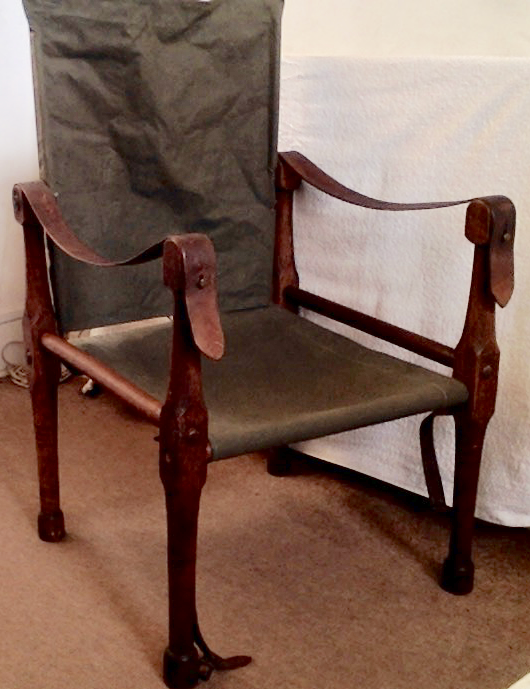 The Roorkee chair is lightweight at about 10 lbs., and breaks down quickly to be stored in a 9″ x 36″ canvas bag. The ingenuity of the design lies not only in its ease-of-assembly and dis-assembly, but the very act of sitting in the chair reinforces its structure. The seat canvas is slung between front and rear crossbars and pulls them towards each other, tightening the side rails in their mortises with the legs. Assembling needs some expertise which batmen (soldier servants) must have learned quickly. How it can be done is shown, using a modern version at https://www.youtube.com/watch?v=nwPqQSYUCvM . Also it requires expertise to get the parts into such a small canvas
The Roorkee chair is lightweight at about 10 lbs., and breaks down quickly to be stored in a 9″ x 36″ canvas bag. The ingenuity of the design lies not only in its ease-of-assembly and dis-assembly, but the very act of sitting in the chair reinforces its structure. The seat canvas is slung between front and rear crossbars and pulls them towards each other, tightening the side rails in their mortises with the legs. Assembling needs some expertise which batmen (soldier servants) must have learned quickly. How it can be done is shown, using a modern version at https://www.youtube.com/watch?v=nwPqQSYUCvM . Also it requires expertise to get the parts into such a small canvas 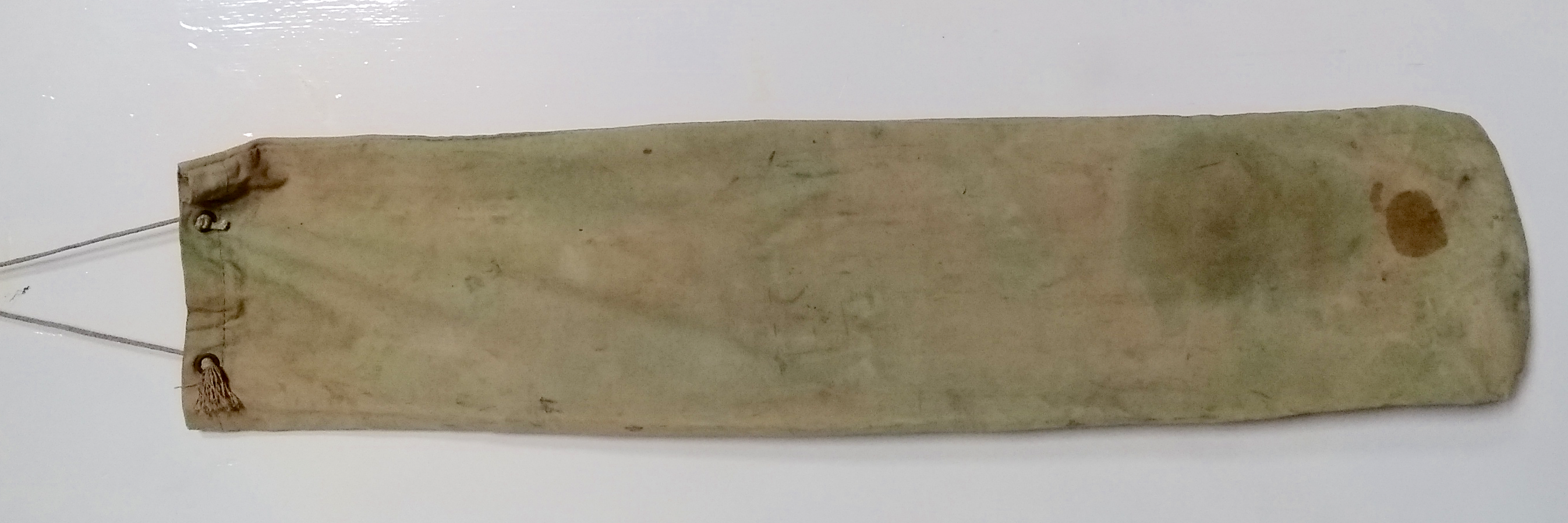 bag. The original bag 90 x 23 cm.
bag. The original bag 90 x 23 cm.
The chairs popularity with generations if British Army Officers was due to it. comfort. Core 77 has an account and show a number of archive photographs of the chair being used including one of Gen. Earl Alexander, sitting in a Roorkee chair beside Churchill, in a less comfortable upholstered (no correct back support) arm chair, who would have known Roorkee chairs well from his time serving in the 4th Hussars.
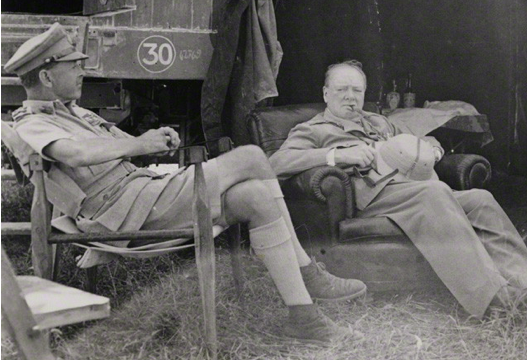 (From https://www.core77.com/posts/65226/MCM-Furniture-Design-History-The-Safari-Chairs-Military-Roots).
(From https://www.core77.com/posts/65226/MCM-Furniture-Design-History-The-Safari-Chairs-Military-Roots).
The bio mechanics
Comfort implies good ergonomics and this was found to be the case when I examined critically my own Roorkee chairs
Leaning backward results in rotation of the backrest with a slight extension force on the 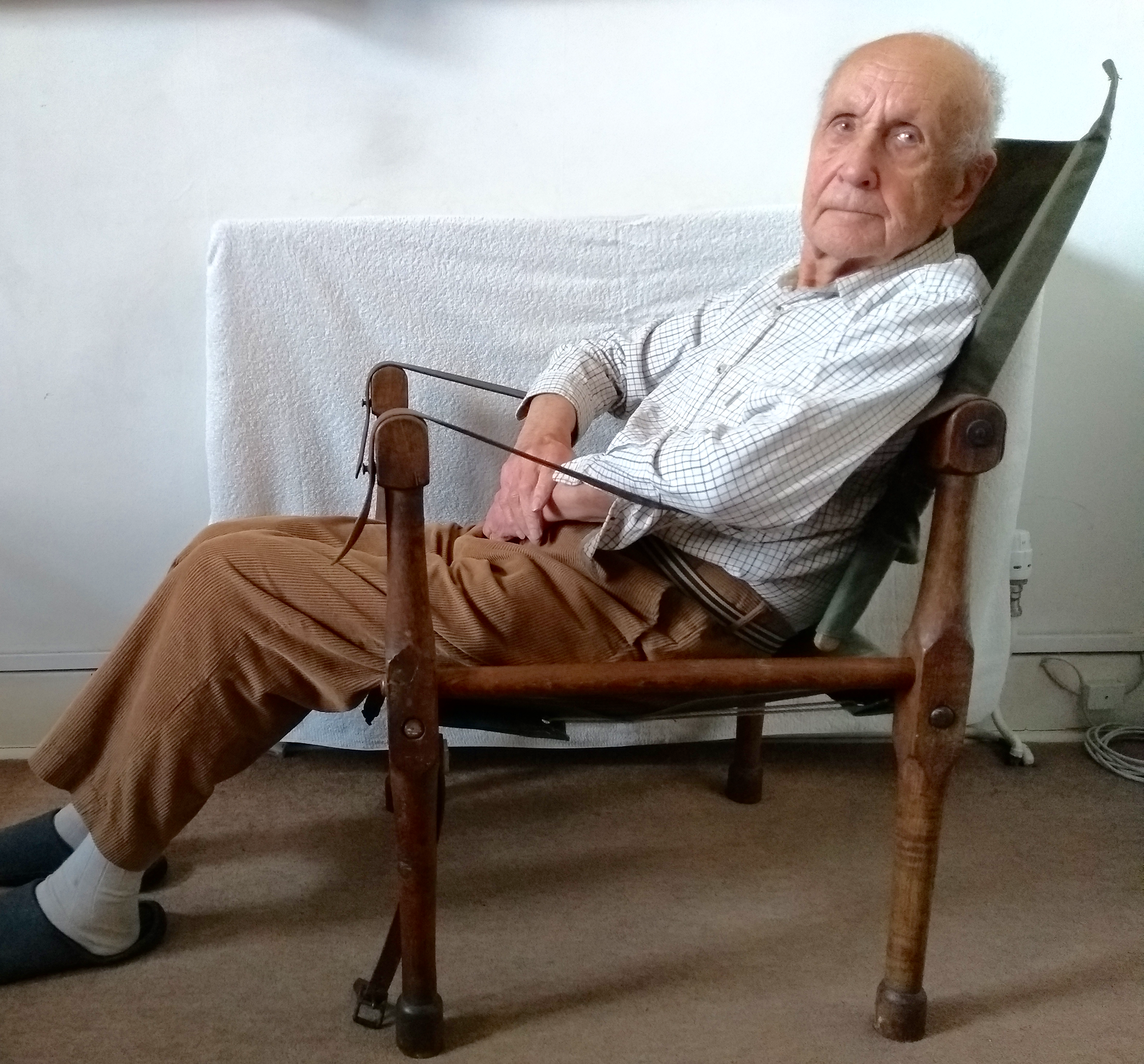 thoracic spine and extension of the lumbar spine due to the forward movement of the bottom edge of the backrest with pressure at the iliac crest. Ideally a pad here would improve this effect.
thoracic spine and extension of the lumbar spine due to the forward movement of the bottom edge of the backrest with pressure at the iliac crest. Ideally a pad here would improve this effect.
This comes close to the 2T CONCEPT and accounts for it’s recognised comfort. Compare the position of the user when sitting in a 2T prototype showing an optimal work position.
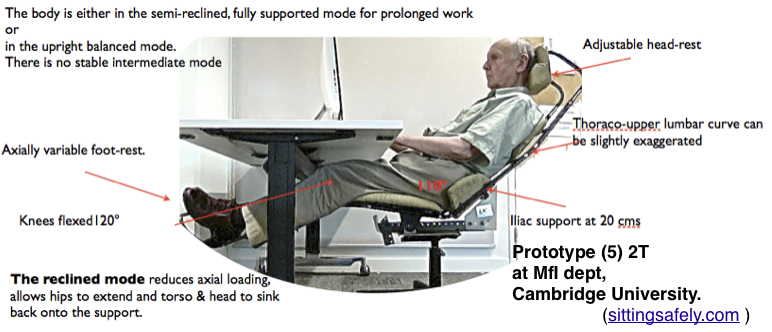 The photograph below,, shows my Uncle and Aunt in about 1950. sitting in what were to become my Roorkee chairs and indicates the bio- mechanics. My Aunt’s has an additional headrest which would allow a sleep mode.
The photograph below,, shows my Uncle and Aunt in about 1950. sitting in what were to become my Roorkee chairs and indicates the bio- mechanics. My Aunt’s has an additional headrest which would allow a sleep mode.
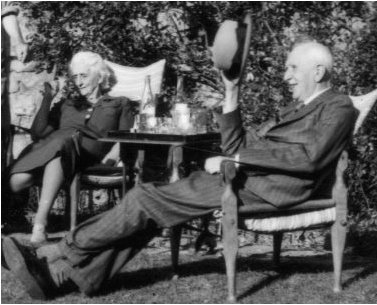 My Uncle’s pair had gone missing, while serving in the Boer War, 1902. so he indented for two more and then the lost pair turned up.
My Uncle’s pair had gone missing, while serving in the Boer War, 1902. so he indented for two more and then the lost pair turned up.
 These are now marketed as ‘Safari Chairs’. For the ‘cool’ uncluttered look a simpler chair is possible and, popular with Interior designers, has many modern derivatives. Some are by top designers and architects including Klint’s Safari Chair and also by Marcel Breuer (the Wassily chair), Le Corbusier (the Basculant Chair), Wilhelm Bofinger (the Farmer’s Chair) and Vico Magistretti (the Armchair 905).
These are now marketed as ‘Safari Chairs’. For the ‘cool’ uncluttered look a simpler chair is possible and, popular with Interior designers, has many modern derivatives. Some are by top designers and architects including Klint’s Safari Chair and also by Marcel Breuer (the Wassily chair), Le Corbusier (the Basculant Chair), Wilhelm Bofinger (the Farmer’s Chair) and Vico Magistretti (the Armchair 905).
Camping & Safari Chairs
There are now many of these, of different types, in the market. Most have zero or negative ergonomics. This account of the Roorkee chair may help designers to produce more use friendly versions.
Office chairs
The tilting backrest may be of help in the design of an office chair along 2T principles.
.
